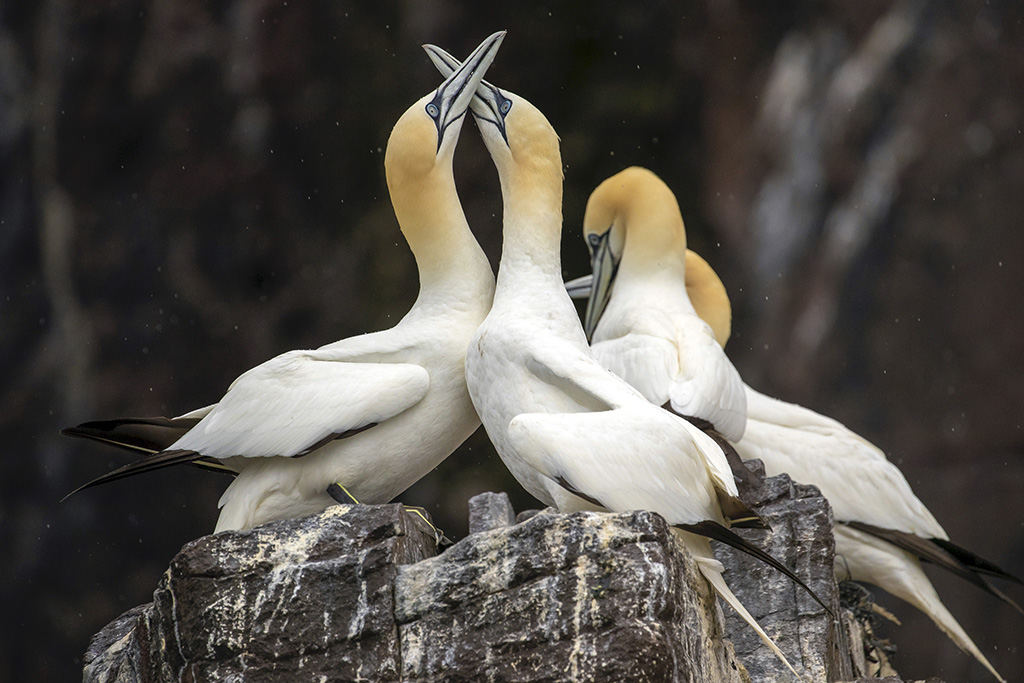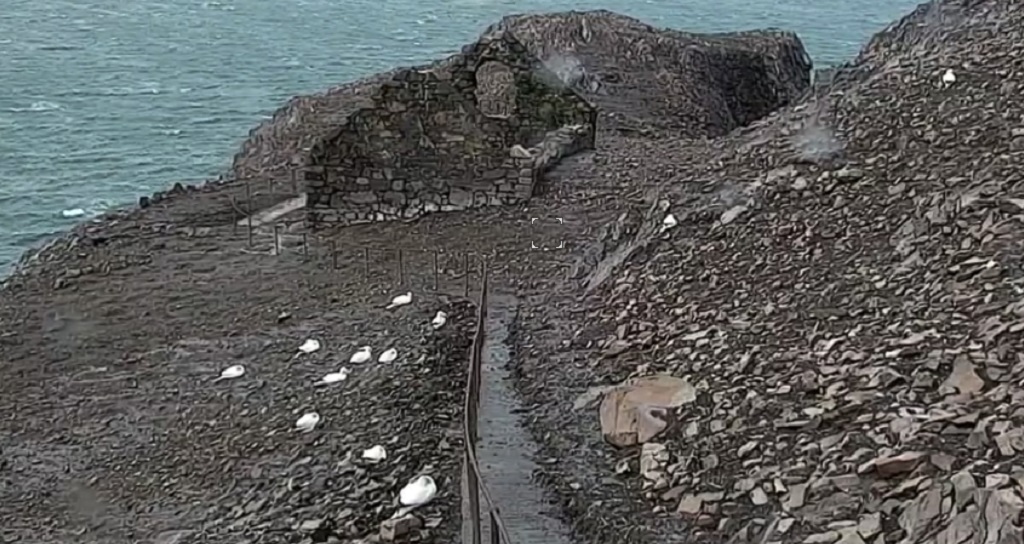
New cameras spot return of the Northern Gannets
The Scottish Seabird Centre is welcoming the arrival of the first gannets in 2020 with the installation of brand-new state of the art cameras.
At the centre’s new interactive Discovery Experience in North Berwick, budding Sir David Attenboroughs and Liz Bonnins will be able to take control of the cameras for themselves to observe the fascinating behaviour of the world’s largest Northern Gannet colony on nearby Bass Rock in the Firth of Forth.
As the last of the country’s white snowscapes thaw, the island off the stunning coast of East Lothian appears to turn white with the sheer volume of gannets settling into their summer home for the breeding season. The gannets typically start to circle the rock in late February, then finally land and take residence on the Island in late March.
The appearance of the first gannets is a significant milestone in the start of the breeding season on the Firth of Forth islands. The area is of international importance for breeding seabirds with over 500,000 nesting on the islands, including puffins, cormorants, kittiwakes, guillemots, razorbills, fulmars, shags and terns.

New interactive cameras to capture the return of the world’s largest Northern Gannet colony on Bass Rock
One of the UK’s leading conservation and education charities, the Scottish Seabird Centre, is welcoming the arrival of the first gannets in 2020 with the installation of brand-new state of the art cameras. At the Centre’s new interactive Discovery Experience in North Berwick (a 30 minute train ride from Edinburgh), budding Sir David Attenboroughs and Liz Bonnins will be able to take control of the cameras for themselves to observe the fascinating behaviour of the world’s largest Northern Gannet colony on nearby Bass Rock in the Firth of Forth.
As the last of the country’s white snowscapes thaw, the island off the stunning coast of East Lothian appears to turn white with the sheer volume of gannets settling into their summer home for the breeding season. The gannets typically start to circle the rock in late February, then finally land and take residence on the Island in late March.
The appearance of the first gannets is a significant milestone in the start of the breeding season on the Firth of Forth islands. The area is of international importance for breeding seabirds with over 500,000 nesting on the islands, including puffins, cormorants, kittiwakes, guillemots, razorbills, fulmars, shags and terns.
Mal Watson, Science Communicator at the Scottish Seabird Centre, said: “We’re incredibly excited about the installation of these new cameras, which are now almost complete. The cameras allow visitors to our new interactive Discovery Experience to witness the return of these beautiful seabirds first-hand. As it’s the World’s Largest Colony of Northern Gannets, we can of course guarantee there is no other experience like it in the world. The sight of thousands of gannets nesting on Bass Rock is always amazing to witness – even for those who have worked here for many years.”
The Scottish Seabird Centre’s new Discovery Experience
Mal Watson, science communicator at the Scottish Seabird Centre, said: ‘We’re incredibly excited about the installation of these new cameras, which are now almost complete. The cameras allow visitors to our new interactive Discovery Experience to witness the return of these beautiful seabirds first-hand.
‘As it’s the world’s largest colony of Northern Gannets, we can of course guarantee there is no other experience like it in the world. The sight of thousands of gannets nesting on Bass Rock is always amazing to witness – even for those who have worked here for many years.’
The Scottish Seabird Centre’s new Discovery Experience opened its doors for the first time for Scotland’s Year of Coasts and Waters in 2020. Visitors of all ages are virtually transported from the warmth and comfort of the visitor centre, deep into a variety of Scottish marine habitats, reinforcing the charity’s role to explore and communicate the wonders of these habitats and the challenges they face, including climate change, invasive non-native species and marine plastics.

Gannets return to the Bass Rock
The centre’s new mechanical exhibits, interactive games, virtual reality experience and storyboards have all been designed in partnership with the expert team from Glasgow Science Centre. The expanded themes focus on seabirds, marine habitats and wildlife, threats and scientific discovery.
The Scottish Seabird Centre’s interactive live cameras are located on the Firth of Forth islands, including the Bass Rock. The new cameras replace previously outdated cameras on the island, and will provide much clearer images of the area’s amazing marine wildlife. Visitors to the centre can use them to zoom in on a range of wildlife, without any disturbance to the animals.
The Scottish Seabird Centre is open daily and boat trips around the Bass Rock will start in April. For more information or to book a boat trip, visit seabird.org
TAGS

